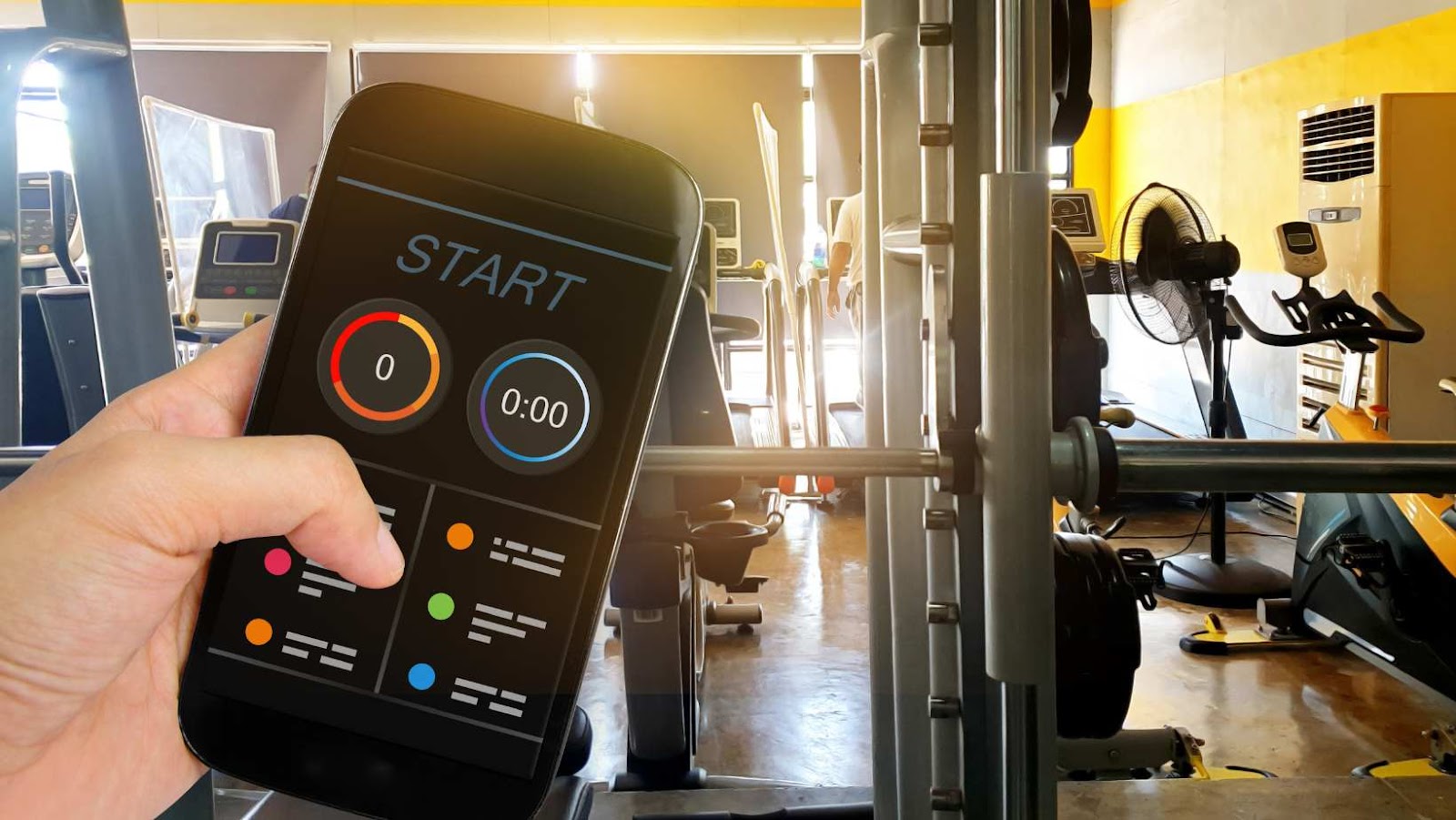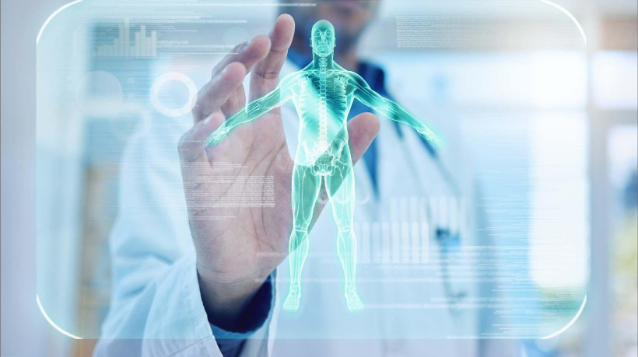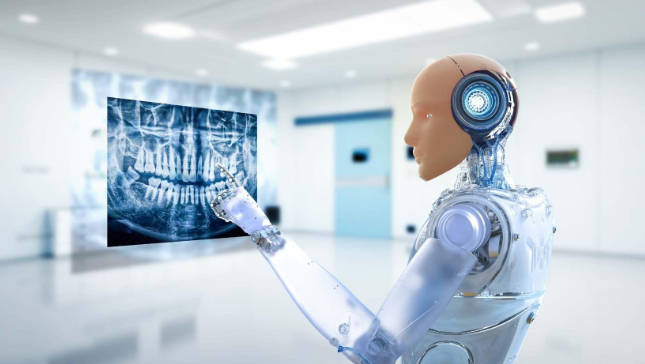The health and fitness app development industry is booming as more and more people turn to digital solutions to improve their health. Whether it’s tracking exercise routines, monitoring diet, or simply maintaining a healthier lifestyle, mobile apps are a convenient and efficient tool for achieving these goals.
As the demand for these apps grows, so do the technological advancements driving their evolution. Check out the latest trends in health and fitness app development, essential features for such apps, and how artificial intelligence (AI) is reshaping the industry.

Growing Demand for Health and Fitness Apps
individuals are more health-conscious than ever before, seeking effective ways to track their fitness journeys. As a result, health and fitness apps have become indispensable tools for users who want to monitor their physical activities, track their nutrition, and receive personalized fitness guidance.
The rise of wearable devices like smartwatches and fitness trackers has further accelerated the demand for apps that integrate seamlessly with these devices to collect real-time data.
According to a report by Grand View Research, the global fitness app market size was valued at USD 9.25 billion in 2023 and is projected to grow at a compound annual growth rate (CAGR) of 14.08% from 2024 to 2030. This growth underscores the increasing reliance on digital fitness tools.
Why Are Health and Fitness Apps Essential?
Health and fitness apps help users track everything from daily step count and heart rate to the quality of their sleep. These apps also provide motivation and insights through data analysis, making it easier for users to stay on top of their goals.
As consumers increasingly adopt a holistic approach to health, the use of fitness apps is no longer just about tracking physical activities—it’s about creating a personalized health journey.
Key Trends in Health and Fitness App Development
The landscape of health and fitness app development is evolving at a rapid pace, with new technologies enhancing the user experience and providing more value than ever before. Here are some of the top trends driving this change:
1. Integration of Wearables and IoT Devices:
Incorporating data from wearable devices and Internet of Things (IoT)-enabled gadgets into fitness apps is one of the most important trends. These devices collect various types of health data, such as calories burned, heart rate, blood pressure, and more. By integrating this data into apps, users get a more accurate and holistic view of their fitness.
2. Virtual Fitness Classes and Live Streaming:
Due to the ongoing trend of virtual fitness, many health and fitness apps now offer live streaming of fitness classes. Whether it’s yoga, pilates, or high-intensity interval training (HIIT), users can access workouts in real-time from the comfort of their homes.
With interactive features, live sessions offer a more engaging experience than pre-recorded videos. In 2022, the global live streaming market for fitness classes was valued at $16.4 billion and is projected to grow at a CAGR of 26.72% from 2023 to 2030, according to Grand View Research.
3. Personalization and Customization:
Users expect personalized health and fitness experiences according to their unique goals, preferences, and fitness levels. Apps are increasingly using data analytics to deliver customized workout plans, meal suggestions, and recovery tips. Customization allows for a deeper connection with the app, improving user retention and satisfaction.
4. AI-Powered Insights:
Artificial Intelligence (AI) is becoming more prevalent in fitness app development. AI technologies can analyze user behavior, track progress, and provide predictive insights about how to improve fitness routines.
By leveraging AI, developers are creating smart fitness apps that adapt to users’ changing needs and preferences, making them more effective than traditional fitness programs.
5. Health and Wellness Community Integration:
People thrive when they are part of a supportive community, and fitness apps are capitalizing on this by integrating social features. These features allow users to share achievements, interact with fellow users, and participate in challenges. This helps to maintain motivation and build a sense of community.
Fuel Your Fitness App Development with App-Scoop’s Top Developers
As the demand for health and fitness apps continues to surge, it is crucial for businesses to partner with experienced app development companies that can harness the latest trends and technologies. At App-Scoop, we specialize in developing fitness apps in Canada and USA that integrate seamlessly with wearable devices, providing users with real-time data and personalized fitness plans.
Our team leverages advanced technologies such as AI, machine learning, and IoT to deliver intuitive, user-centric experiences that drive engagement and promote long-term health goals.
Whether you’re looking to develop a fitness tracker, a virtual coach, or a complete wellness solution, App-Scoop has the expertise to bring your vision to life and capitalize on the growing fitness app market.
Book Your Free Consultation Now!

Essential Features of Health and Fitness Apps
To create an effective and competitive health and fitness app, it is essential to incorporate features that users find valuable. Below are the must-have features that developers should consider when building health and fitness apps.
1. Activity Tracker:
An activity tracker is the core feature of any fitness app. It helps users monitor their physical activities such as walking, running, cycling, and swimming. By providing real-time data, users can track their progress and make necessary adjustments to their routines. Integration with wearables further enhances the accuracy of activity tracking.
2. Nutrition and Meal Tracking:
Maintaining a healthy diet is crucial to achieving fitness goals. Therefore, a nutrition tracker that allows users to log their meals, monitor calorie intake, and receive meal suggestions based on their goals is indispensable. Advanced apps even use AI to suggest meals based on users’ dietary preferences and nutritional needs.
3. Workout Plans and Exercise Routines:
Offering a library of workout plans and exercise routines tailored to different fitness levels and goals is essential. Apps should include video tutorials and instructional content to ensure users can perform exercises safely and correctly. The ability to track sets, reps, and weights also ensures that users can monitor progress.
4. Progress Tracking and Analytics:
Progress tracking features allow users to monitor their improvements over time. Apps should display visual representations of progress in the form of graphs, charts, or metrics, making it easy to assess fitness levels and track personal bests.
Additionally, providing regular analytics and feedback encourages users to stay committed to their fitness goals.
5. AI-Powered Personalization:
AI-powered personalization is one of the most powerful features an app can have. It uses machine learning algorithms to analyze data and create personalized fitness recommendations based on the user’s preferences, goals, and progress.
AI can also predict when users may need a change in their fitness plan to keep them on track.
Related Articles:
- How Can HealthKit and Google Fit Help You Develop Healthcare and Fitness Apps?
- Aspects to Consider When Developing a Mental Health App
- Why AI Voice Chatbots are Essential for Modern Healthcare Services?
Role of AI in Health and Fitness App Development
Artificial intelligence has become a driving force behind many innovations in health and fitness app development. AI enables apps to deliver more personalized and intelligent fitness experiences. Here’s how AI is changing the fitness industry:
1. Predictive Analytics for Performance Optimization:
AI algorithms use data from users’ workouts and fitness routines to predict performance improvements. This helps users optimize their training plans and avoid plateaus. By providing insights into when users should increase intensity or rest, AI can ensure better results.
2. Virtual Coaching:
AI-powered virtual coaches are becoming a staple in fitness apps. These virtual trainers guide users through workouts, offer motivation, and provide corrections based on performance. Virtual coaches provide real-time feedback and adjust workout intensity according to users’ abilities, ensuring that each session is challenging yet achievable.
3. Intelligent Meal Recommendations:
AI can help users make smarter food choices by analyzing their dietary preferences, goals, and health data. It can recommend meal plans and even integrate with grocery delivery services to make it easy for users to follow healthy eating habits.
AI-driven insights ensure that the food choices are aligned with the user’s fitness goals, whether they are looking to lose weight, build muscle, or maintain a healthy lifestyle.
4. Gamification of Fitness:
AI is also being used to gamify fitness experiences, making workouts more fun and engaging. By introducing game-like challenges, AI can encourage users to achieve their fitness goals and earn rewards for their efforts. This keeps users motivated and promotes a long-term commitment to their health journey.

As health and fitness app development evolves, developers must stay ahead of trends, integrate user-friendly features, and leverage AI to enhance user experience. By offering personalized fitness plans, integrating wearable devices, and utilizing AI insights, health and fitness app developers can create apps that meet the needs of fitness enthusiasts and drive long-term engagement.
The future of fitness apps is promising, with technology and innovation shaping how we approach health and fitness.
Frequently Asked Questions
What are the current trends in health and fitness app development?
Current trends in health and fitness app development include personalized fitness plans, integration with wearable devices (like smartwatches), AI-driven health tracking, virtual coaching, social features for community engagement, and a focus on mental well-being. There is also a growing interest in apps that support remote healthcare and telemedicine.
How does AI enhance health and fitness apps?
AI enhances health and fitness apps by providing personalized recommendations, analyzing user data to predict health outcomes, and offering virtual coaching. It can optimize workout plans, track progress more accurately, and provide real-time feedback, making the experience more tailored and effective for users.
What features should health and fitness apps have in 2025?
In 2025, health and fitness apps should offer features such as advanced AI-driven fitness tracking, real-time health data analytics, seamless integration with wearable devices, personalized workout and nutrition plans, community-based features for motivation, and integration with telemedicine platforms for virtual consultations.
How do health and fitness apps use wearables to track fitness data?
Health and fitness apps use wearables like smartwatches and fitness trackers to collect data on steps, heart rate, calories burned, sleep patterns, and more. This data is synced with the app, providing users with real-time insights into their health and fitness progress. The integration enhances the app’s ability to provide personalized recommendations and track long-term goals.
What role does AI play in creating personalized fitness plans?
AI helps create personalized fitness plans by analyzing a user’s goals, physical condition, and preferences. Based on this data, AI can suggest customized workouts, track progress, adjust the plans over time, and provide real-time feedback to optimize fitness outcomes. It ensures that the fitness plan is tailored to each individual’s unique needs and abilities.
How does AI contribute to health and wellness tracking?
AI contributes to health and wellness tracking by analyzing data from wearables, user input, and other sources to offer actionable insights. AI-powered algorithms can detect patterns in a user’s physical activity, sleep, and nutrition, providing recommendations for improvement and identifying potential health risks early.
Are there features that help users with mental well-being in health and fitness apps?
Yes, many health and fitness apps now include features aimed at improving mental well-being, such as meditation sessions, mood tracking, stress management tools, and sleep improvement tips. These apps often integrate with fitness and wellness data, providing a holistic approach to both physical and mental health.
How do health and fitness apps improve user engagement?
Health and fitness apps improve user engagement through features like gamification, social sharing, challenges, rewards, and progress tracking. By making fitness fun and encouraging users to stay committed through community support or competitions, these apps foster long-term engagement and motivation.
What are the benefits of telemedicine integration in health and fitness apps?
Telemedicine integration allows users to consult healthcare professionals virtually through the app. This feature provides easy access to medical advice, personalized fitness assessments, and virtual health consultations, enhancing the app’s value by bridging the gap between fitness and healthcare services.
What is the future of health and fitness app development with AI?
The future of health and fitness app development with AI lies in more advanced personalized experiences. AI will continue to improve data analytics, enabling even more accurate predictions of user health outcomes. The integration of AI-driven virtual assistants, smarter recommendations, real-time adaptive plans, and enhanced mental health features will make these apps even more vital for users seeking a holistic approach to their well-being.













